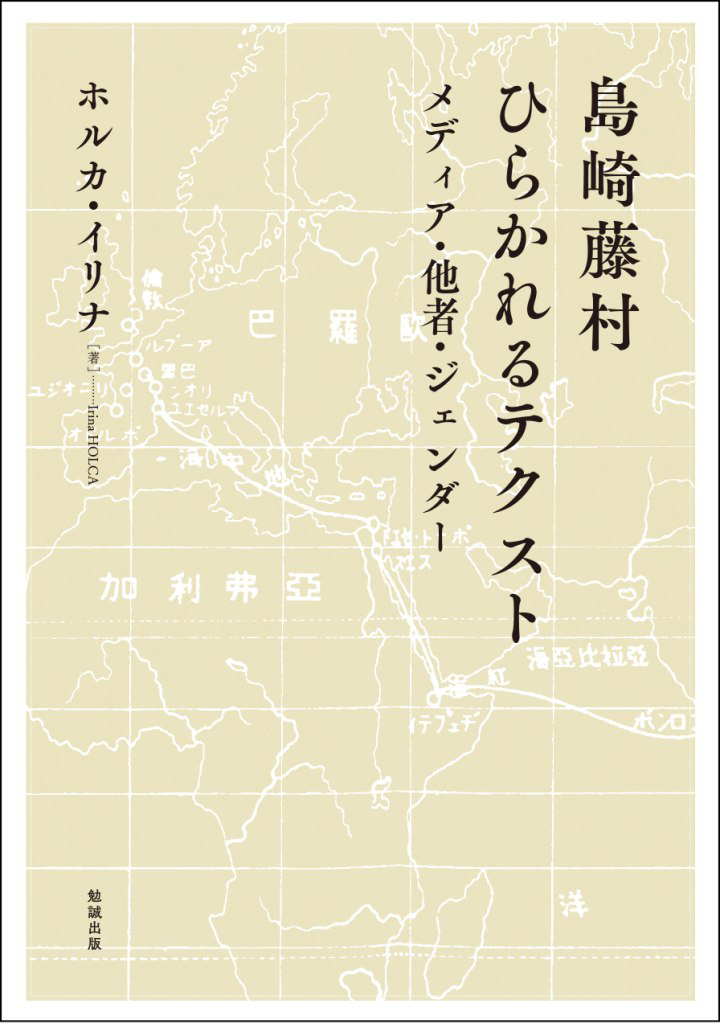
Title
Shimazaki Tōson, hirakareru tekusuto: media, tasha, gender (The (Re)opened Text: Media, Otherness, and Gender in Shimazaki Tōson's Literature)
Size
256 pages, A5 format, hardcover
Language
Japanese
Released
April, 2018
ISBN
978-4-585-29164-0
Published by
Bensei Shuppan
Book Info
See Book Availability at Library
Japanese Page
Shimazaki Tōson (1872-1943) started his career in the late 19th century as a Romantic poet; today, he continues to be celebrated as the father of Japanese new-style poetry (shintaishi), his verse included in school textbooks. Tōson was also a novelist: at the beginning of the 20th century, with the rise of realism and naturalism, he turned to prose and produced numerous novels focusing on his own life experiences and moral dilemmas, as well as those of his close friends and family. As such, he has long been discussed as one of the leading voices of the shishōsetsu, the autobiographical genre born out of the modern Japanese male intellectual’s search for self. The genre was often criticized for its self-centredness; nevertheless, the in-depth analysis I conduct in my books reveals the fact that the personal was organically linked with the social and the political in Tōson’s writing, his relationship with the age he lived in complex and nuanced.
The first part of my book, “Texts in the media” sheds light on how Tōson’s works (his novels Haru [Spring] and Sakura no mi no juku suru toki [When the Cherries Ripen], his reading primer Tōson tokuhon, etc) interacted with other discourses present in the media at the time of their publication, such as illustrations, readers’ contributions, school textbooks and supplementary primers, to point out the dynamic relation between these literary works and their contemporaneous readers— the unique ways in which Tōson’s texts attempted to shape young minds, and were shaped at the same time by their needs and interpretations.
The second part, titled “The other in the text,” follows the process through which several literary pieces that cannot be easily reduced to a single author’s consciousness, are produced. First, I analyse how Hakai [The Broken Commandment] was re-created in Romanian translation under Ceausescu’s communist regime, so as to accommodate alternative “paranoid readings” that avoided the eye of the censor. Next, I focus on Haru [Spring] as a patchwork of quotations from Japanese and foreign authors that re-create the atmosphere of the early Meiji period. Finally, I look at Shinsei [New Life] as a novel that allows the voice of the third person narrator, telling the story of the male protagonist, to be overwritten by the female voice made “audible” through the letters embedded in the text.
Part three, “Gender disrupts the text,” aims to uncover the ways in which Tōson’s literature succeeds in destabilizing commonly held ideas about gender roles and family. I first discuss the ambivalence of the male protagonist’s experiencing war behind the lines in a foreign country, together with the French women and children (in Shinsei [New Life]); next, I focus on how Aru onna no shōgai [A Woman’s Life] problematizes the sexual drive of an elderly woman and the “worth” of a mentally disabled one; and last, I conduct an in-depth analysis of Arashi [The Tempest], revealing the constructedness of family, against the background of contemporaneous discourses about motherhood and fatherhood.
My book looks at Tōson’s texts beyond the presumed relationship between reality and representation of autobiographical fiction, pointing out the ways, unique to literature, in which such texts can bring to light universal truths, but also individual interpretations dependent on the reader’s positionality.
(Written by Irina HOLCA, Associate Professor, Graduate School of Arts and Sciences / 2021)
Related Info
Recipient of the Award of the Association for the Study on Japanese Language and Literature (The Association for the Study of Japanese Language and Literature)
http://www.nacos.com/kokubun/prize.html



 Find a book
Find a book

